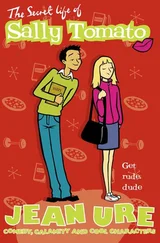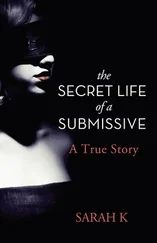Her sense of dissatisfaction bled into the rest of her life. Because she felt she was viewed as just a bubble-headed blonde, she not only thought she couldn’t have the career she wanted, she also believed she couldn’t have the kind of relationships she wanted—indeed, the kind of life she wanted. “She realized that she would have to ease into a new image,” noted Charles Casillo, “an image that would allow her to age and continue to grow in her work and still remain ‘Marilyn.’ ”
Now, at twenty-eight, she was determined to do something to rectify her image, both professionally and personally. Thus her connection with Lee Strasberg in 1955.
Lee Strasberg’s version of “The Method”—inspired by the teachings of Stanislavsky—required an actor to use “sense memory,” drawing from his own past experiences. The concept was that in doing so the actor would create a character with more depth and interest. Strasberg’s devout belief in sense memory would become quite controversial. It would be the reason why some other founding members of the Group Theatre, like Stella Adler and Sanford Meisner, rejected Strasberg’s concept and would teach their own versions of Stanislavsky’s method. Though these new instructors’ concepts were also based on Stanislavsky’s system, Strasberg and his devotees would not budge from their position that self-examination and reflection upon one’s past was integral to the creation of a fine actor. Many noteworthy actors would come through the studio at different times during their careers, including James Dean, Marlon Brando, Robert Duvall, Montgomery Clift, Sally Field, Dustin Hoffman, Paul Newman, and Sidney Poitier.
“My father wanted to arouse everything undealt with, everything repressed about Marilyn’s past, and to tap all her explosive energy,” Lee Strasberg’s daughter, Susan, once explained. “To bring all that up, he said she’d have to work on it in a formal, professional setting.” Strasberg’s acting theories appealed to Marilyn. After all, it was familiar terrain for her in that Natasha Lytess had always wanted her to draw from her own life and then imbue her performances with aspects of her sadness and confusion—and even come to terms with her past in order to be a better actress. The difference, of course, is that Natasha, being the controlling woman she was, actually dictated to Marilyn what experiences she should draw from and, moreover, even attempted at times to manipulate those experiences—such as when she encouraged her to meet her father in order to then extract from that relationship what might benefit her acting. But Lee Strasberg presented his own set of problems, too. Though Marilyn made every attempt to follow his instruction, he didn’t believe she was successfully accessing her past emotional pain.
“Lee was particularly hard on Marilyn,” says a classmate of Monroe’s. “I think he saw her as a way to rebuild his reputation.”
Indeed, when Strasberg became artistic director of the Actors Studio, he claimed to have trained a number of actors who didn’t actually study under him. When Sanford Meisner, the acting teacher and founder of the highly respected Neighborhood Playhouse, heard that Strasberg was claiming responsibility for the success of actors Meisner himself had taught, sparks flew. Meisner, seeking to set the record straight, spoke often of Strasberg’s attempts to take credit where credit was not due, and the two would have an animosity for each other that would last the rest of their lives. “I think [Lee’s] feeling was that if he could make Marilyn Monroe a great actress, people would see him as a miracle worker. She wasn’t considered a ‘real actor’ in the New York theater community, and he tried like hell to turn her into one.”
“He was mean to her,” recalls another classmate. “He’d say things like ‘that’s how someone who’s never felt before would do the scene, now try to do it like someone who can experience emotion.’ ”
Still, Marilyn dedicated herself to Strasberg’s classes—at the studio, and also privately at his home—even though she sometimes felt that the other students looked at her more as a curiosity than as a real actress.
As part of Marilyn’s new life in New York, she began to undergo analysis with a therapist named Margaret Hohenberg. She’d been recommended to her by Milton Greene, but it was at Lee’s insistence that she underwent such psychotherapy. Moreover, Hohenberg was a psychiatrist whom Lee Strasberg said he approved of, which suggests that maybe he was having a little too much influence on Marilyn. Some even began to wonder if perhaps he was to be “the new Natasha.” Only time would tell. One thing was certain: Lee Strasberg may have been a capable acting teacher, but privately his life was as much a mess as those of some of his troubled and conflicted students—including Marilyn. “Our household revolved around my father, his moods, his needs, his expectations and his neuroses,” recalled his daughter, Susan. “He was teaching people how to act, but that was nothing compared to the drama in our house… our entire family were intimate strangers.”
While Marilyn had been in analysis in the past, she was more determined than ever to now understand herself and her mother as well as other influences in her life. She had seen so much emotional and mental deterioration in her family, she’d always believed that if she faced problems head-on on a psychiatrist’s couch, she would have an advantage that had been out of reach for her ancestors. In other words, if she ever felt she was losing her mind, at least she would have some recourse and would be able to do something about it, unlike Della and Gladys. That may have been a logical and worthwhile pursuit in and of itself, but coupled with the kind of introspection going on every day in Strasberg’s acting classes, it was definitely too much, too quickly.
Many people in Marilyn’s new life whom she had known prior to this time—such as Arthur Miller, the playwright whom she had met a few years earlier and with whom she had stayed in close contact over the years—were concerned about subtle changes in Marilyn’s personality that were becoming evident during this time. Indeed, the combination of Strasberg’s influence to dig deep within herself for her acting along with Hohenberg’s insistence that she do the same thing for her life was turning Marilyn into a different kind of person—a darker and often more morose person. She had long believed that her focus on her earlier pain and misery was a destination in and of itself, that there was a payoff in it. Now, at long last, those feelings were being confirmed for her. Yes, she should concentrate on her past. Yes, she should bring it all to light on a daily basis and identify herself with it. And why not exaggerate it, too? It was as if she had found the key to becoming a better person and a better actress—her pain. Therefore, she began to concentrate daily on her darkest self, her saddest self. Though she may have thought this was a treasure trove of dramatic interest—and maybe it was—the problem was that she wasn’t able to just turn off all of those emotions when she wished and go about her day. Indeed, in the months and years to come, she would become more depressed than ever as the misery of her past weighed heavily on her mind. After a day of dealing with her personal pain in such an intensified setting, how could anyone expect her to just drift off and go to sleep? No. She had to have sleeping pills. Then, the next day, she would need more medication to function. If it went particularly badly in class or in therapy, she would need something else for her anxiety—a sedative would do nicely. She was so dependent on pills by this time, it’s a wonder she could function at all. “I remember that she would ask me, ‘Do you want a pill?’ ” recalled her friend John Gilmore, “and she would reach into her purse and come out with a handful. She’d just put them all out on the table and say, ‘You can take this one to sleep and this one for anxiety and this one for…’ It was very disconcerting.” It should be noted, though, that in the 1950s, many actors and actresses depended on drugs to get through the day. Everyone from Elizabeth Taylor to Marlon Brando to Montgomery Clift to Tallulah Bankhead was addicted to one drug or another. Their lives and careers were not enhanced either by such excessive self-medicating.
Читать дальше












